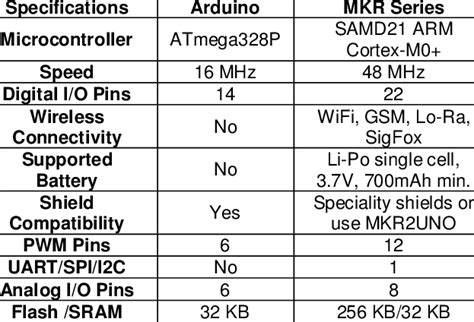What is Arduino?
Arduino is an open-source hardware and software platform that consists of a microcontroller board and an Integrated Development Environment (IDE) for programming the board. It was designed to make electronics more accessible to artists, designers, hobbyists, and anyone interested in creating interactive objects or environments.
Arduino Leonardo Overview
The Arduino Leonardo is a microcontroller board based on the ATmega32u4 chip. It has 20 digital input/output pins, 12 of which can be used as PWM outputs, and 12 analog inputs. The board also includes a built-in USB communication, eliminating the need for a secondary processor.
Key Features of Arduino Leonardo
- ATmega32u4 microcontroller
- 20 digital input/output pins
- 12 PWM outputs
- 12 analog inputs
- Built-in USB communication
- 32KB Flash Memory
- 2.5KB SRAM
- 1KB EEPROM
- 16MHz clock speed
Arduino UNO Overview
The Arduino UNO is a microcontroller board based on the ATmega328P chip. It has 14 digital input/output pins, 6 of which can be used as PWM outputs, and 6 analog inputs. The board uses a separate USB-to-serial converter chip for USB communication.
Key Features of Arduino UNO
- ATmega328P microcontroller
- 14 digital input/output pins
- 6 PWM outputs
- 6 analog inputs
- USB-to-serial converter chip
- 32KB Flash Memory
- 2KB SRAM
- 1KB EEPROM
- 16MHz clock speed

Differences Between Arduino Leonardo and UNO
While both the Arduino Leonardo and UNO are popular choices for DIY Projects and embedded systems, there are some key differences between the two boards.
Microcontroller
The main difference between the Arduino Leonardo and UNO is the microcontroller used. The Leonardo uses the ATmega32u4 chip, while the UNO uses the ATmega328P chip. This difference in microcontroller leads to some variations in the features and capabilities of the two boards.
USB Communication
Another significant difference is the way the boards handle USB communication. The Leonardo has built-in USB communication, which means it can appear to a connected computer as a mouse or keyboard. This feature allows for more versatile projects that involve human interface devices (HID). On the other hand, the UNO uses a separate USB-to-serial converter chip, which limits its USB functionality to serial communication.
Pin Configuration
The pin configuration also differs between the two boards. The Leonardo has 20 digital input/output pins and 12 analog inputs, while the UNO has 14 digital input/output pins and 6 analog inputs. Additionally, the Leonardo has 12 PWM outputs compared to the UNO’s 6 PWM outputs.
Memory
Both boards have 32KB of Flash Memory, but the Leonardo has slightly more SRAM (2.5KB) compared to the UNO (2KB). Both boards have 1KB of EEPROM.
Price and Availability
The Arduino UNO is generally more affordable and widely available compared to the Leonardo. This is due to the UNO’s popularity and longer presence in the market.
Comparison Table
| Feature | Arduino Leonardo | Arduino UNO |
|---|---|---|
| Microcontroller | ATmega32u4 | ATmega328P |
| Digital I/O Pins | 20 | 14 |
| PWM Outputs | 12 | 6 |
| Analog Inputs | 12 | 6 |
| USB Communication | Built-in | Separate Chip |
| Flash Memory | 32KB | 32KB |
| SRAM | 2.5KB | 2KB |
| EEPROM | 1KB | 1KB |
| Clock Speed | 16MHz | 16MHz |
Similarities Between Arduino Leonardo and UNO
Despite their differences, the Arduino Leonardo and UNO share several similarities:
- Both boards are based on the Arduino platform and are compatible with the Arduino IDE.
- They have the same clock speed of 16MHz.
- Both boards have a similar form factor and can be used with most Arduino Shields and accessories.
- The Flash Memory capacity is the same for both boards (32KB).
- They both have 1KB of EEPROM.
Which Board Should You Choose?
The choice between the Arduino Leonardo and UNO depends on your specific project requirements. If your project involves creating human interface devices or requires built-in USB communication, the Leonardo is the better choice. However, if you need a more affordable and widely available board for general-purpose projects, the UNO is a solid option.
Consider the following factors when making your decision:
- Project requirements (USB functionality, pin count, etc.)
- Budget
- Availability
- Familiarity with the board and its features
Frequently Asked Questions (FAQ)
-
Can I use Arduino shields with both the Leonardo and UNO?
Yes, most Arduino shields are compatible with both the Leonardo and UNO, as they share a similar form factor. -
Is the Arduino Leonardo more expensive than the UNO?
Generally, the Arduino Leonardo is slightly more expensive than the UNO due to its additional features and capabilities. -
Can I use the Arduino Leonardo as a mouse or keyboard?
Yes, the Arduino Leonardo has built-in USB communication, which allows it to appear as a mouse or keyboard to a connected computer. -
Is the Arduino UNO better for beginners?
The Arduino UNO is often recommended for beginners due to its simplicity, affordability, and extensive community support. However, the Leonardo is also a viable option for beginners who need its specific features. -
Can I use the same code on both the Leonardo and UNO?
In most cases, code written for the Arduino UNO can be used on the Leonardo with little to no modification. However, some libraries or code that rely on specific pin configurations or features may need to be adapted.
Conclusion
The Arduino Leonardo and UNO are both excellent choices for a wide range of DIY projects and embedded systems. While they share many similarities, their differences in microcontroller, USB communication, and pin configuration make them suitable for different types of projects.
By understanding the key features and capabilities of each board, you can make an informed decision when selecting the right Arduino board for your needs. Whether you choose the Leonardo or the UNO, you’ll have access to a powerful and versatile platform for bringing your ideas to life.






Leave a Reply